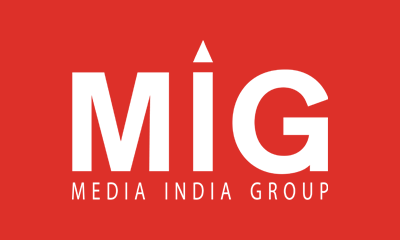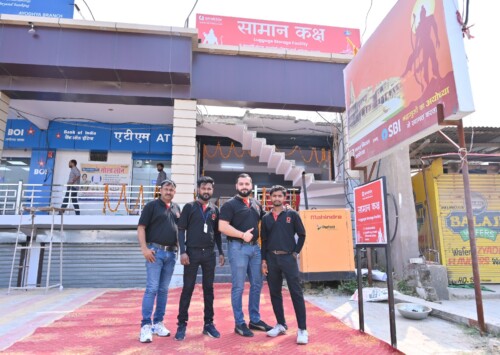A billion babies, a billion needs: Inside India’s growing baby care industry
Higher disposable income, better digital connectivity drive growth
Hyderabad-based market research firm Mordor Intelligence estimates that India’s baby care products market is worth USD 4.94 billion this year and is projected to reach USD 8.61 billion by 2030, registering a robust compound annual growth rate (CAGR) of 11.76 pc. According to marketing professionals, factors such as a booming population, rising disposable incomes, and increasing digital connectivity are key drivers behind this rapid expansion.
Alongside a rising population, the surge in new parents with higher disposable incomes, the growth of e-commerce platforms, and a preference for premium products have together fueled a staggering rise in the babycare segment in India.
According to a report by Hyderabad-based Mordor Intelligence, the baby care products market in India is currently valued at USD 4.94 billion in 2025 and is projected to grow to USD 8.61 billion by 2030, registering a compound annual growth rate (CAGR) of 11.76 pc.
The market comprises a range of products including baby oil, baby shampoo, baby powder, diapers, baby wipes, baby seats and safety products, baby food, baby apparel, and baby toys.
As per a report by BlueWeave Consulting, the market is dominated by Johnson & Johnson, known for its comprehensive product portfolio and is considered staples due to their safety standards and dermatologically tested formulations. Other key players include Procter & Gamble, Nestlé, Abbott, Danone, Unilever, Kimberly Clark and Uppababy.
Sudden rise of baby care products in India
According to marketing professionals, a host of factors are leading to boom in baby products in India. Stuti Sarkar, a zonal manager at American consumer health company Kenvue, formerly a healthcare division of Johnson & Johnson, believes that the boom in the Indian population, increased awareness among parents, especially mothers, about baby care, and rising incomes among new Indian parents have all contributed to the growth of the baby care products market.
“If you look at the 2023 data on global births, India tops the chart with around 23.2 million. The next is China with 8.8 million and countries like Nigeria, Pakistan, and Indonesia are even lower. In fact, the combined number of births in the 2nd to 5th ranked countries is roughly equal to India’s total. That’s about 44 babies born every minute, a staggering figure, making India the baby capital of the world. Alongside this, parents, especially mothers, are becoming highly conscious of the products they use for their babies, leading to more specific demands and rising competition in the baby care space,” Sarkar tells Media India Group.
Additionally increasing digital connectivity and the rise of digital payment systems, particularly in urban areas, have further boosted the consumption of childcare products.
For example, e-commerce company Baby & Mom Retail reported revenue of approximately USD 2.77 million in 2023, which grew to around USD 5.30 million in 2024. The company is now targeting USD 12 million in revenue by 2025.
Driven by a customer-focused brand portfolio that includes Oyobaby , Newish, Redcop, Gadda company, (Mattress Protecto, and Amorite, the company is now planning a public listing, with an IPO, which is projected to hit the valuation of approximately USD 33.7 million by 2026.
The growth story of Baby & Mom Retail underscores how e-commerce platforms have become key drivers in the rising demand for childcare products across India.
Moreover, due to intense competition among brands such as Me n Moms, Mothercare, Chicco, and Mother Sparsh, consumer engagement in the baby care segment has increased. As a result, according to a RedSeer report, the per capita spending on childcare products in India is currently between INR 9,280 and INR 9,350 and is projected to grow at a compound annual growth rate (CAGR) of approximately 14 pc from 2023 to 2028, thus outpacing the growth seen in mature markets like United States of America and China.
“If you look at something as simple as baby wipes, which are essential for diaper changes, you now have options as affordable as one rupee per wipe. Earlier, when Johnson’s Baby dominated the market, each wipe would cost around four rupees. But with local players offering more affordable alternatives, these products are now reaching rural markets as well,” adds Sarkar.
Parents preference for their child
But as the market continues to expand in a densely populated country like India, currently home to 1.4 billion people and projected by the United Nations’ World Population Prospects report to peak at around 1.7 billion in the early 2060s, Indian parents today are presented with a wide array of choices when it comes to baby products.
Prashant Singh, a 27 year old salesperson at childcare products counter in South Delhi’s Moti Bagh, new parents are increasingly prioritising the safety and quality of these products. Experts note a growing preference for items that are free from harsh chemicals and potentially harmful ingredients.
“When it comes to baby skincare products like special soaps, shampoos, or oils parents today are extremely discerning. Safety and quality are their top priorities. That is why brands like Sebamed from Germany or Cetaphil by Galderma are so popular, even though they are on the expensive side. Parents pay close attention to things like pH balance, no added fragrance, proper hydration and ingredients like chamomile and allantoin, which help protect delicate skin and maintain its natural minerals. They are really looking for products that are both gentle and effective,” Singh tells Media India Group.
However as per Sarkar, brand and reputation plays a crucial role in the decision-making process for new parents when purchasing baby products. It is one of the key factors they consider, alongside safety, quality, and ingredients.
“The number one thing parents look for when buying baby care products is brand trust and reputation. These days, if a product is found to be faulty, the news spreads instantly everyone knows about it. You will often see mom influencers calling out brands they do not trust, usually because of concerns around safety or questionable ingredients. So parents prefer products from brands that have been around for a while, brands they know and trust to be safe and reliable,” adds Sarkar.
But Smriddhi Dhawan, a human resource (HR) specialist at Apec Global in Mumbai and mother of a 3 month old child, says she prioritises both the price and the sensitivity of a product when choosing items for her baby.
“As a new mom, I have been buying baby care products since July 2025. For me, the two most important things are the price and how sensitive the product is to my baby’s needs,” Dhawan tells Media India Group.
Industry marred by grey areas
However, despite the growing awareness and demand for baby care products in India, the industry continues to face several limitations. One of the biggest challenges is affordability. A significant portion of the Indian population is highly price-conscious, making it difficult for manufacturers to balance quality and cost. Offering safe and effective products at various price points while maintaining standards remains a constant struggle.
Additionally, the market is still largely concentrated in urban areas, with rural regions seeing limited penetration due to lower disposable incomes and restricted access to modern baby products. Even within urban India, the sector is not yet saturated compared to Western countries, indicating growth potential but also highlighting the need for more strategic marketing and better distribution networks.
Cultural practices also influence consumer behaviour. In many Indian households, hand-me-downs such as baby clothes, toys, and accessories are common, which naturally reduces the demand for new products. These factors collectively create grey areas in the market, presenting both challenges and opportunities for brands aiming to cater to the evolving needs of Indian parents.
But as India’s baby care market continues to evolve, understanding the diverse needs and constraints of its consumers will be key. While challenges around affordability, access, and cultural practices persist, they also offer valuable insights for innovation. Brands that can deliver safe, high-quality products at accessible price points while building trust and reaching beyond urban centres stand to gain the most in this growing, yet complex, landscape.










